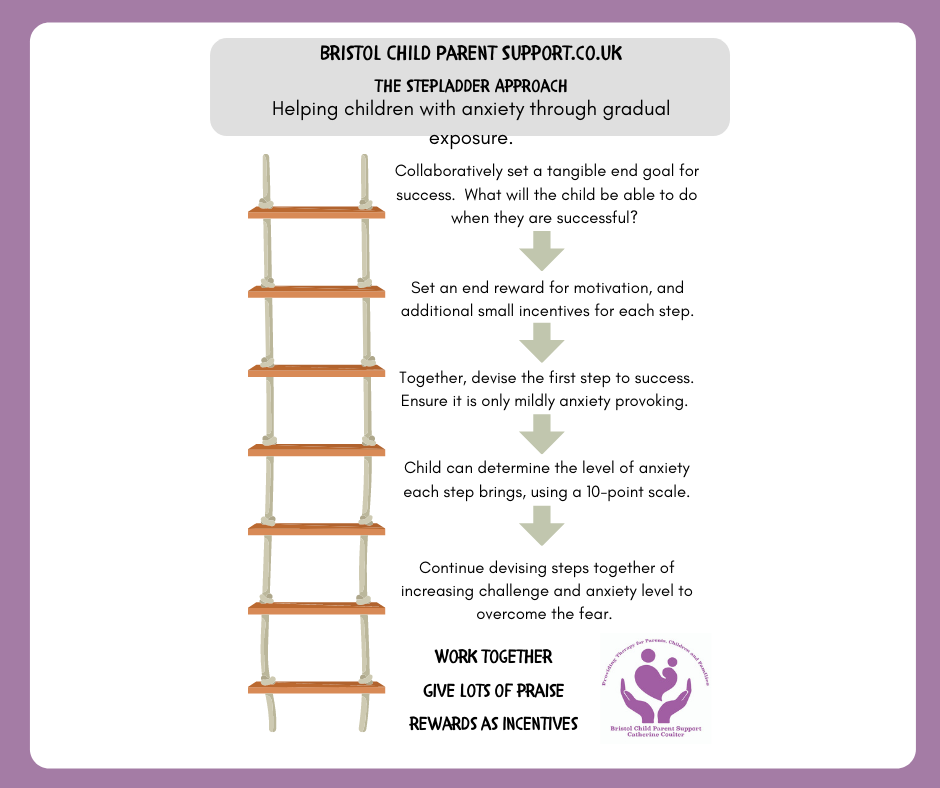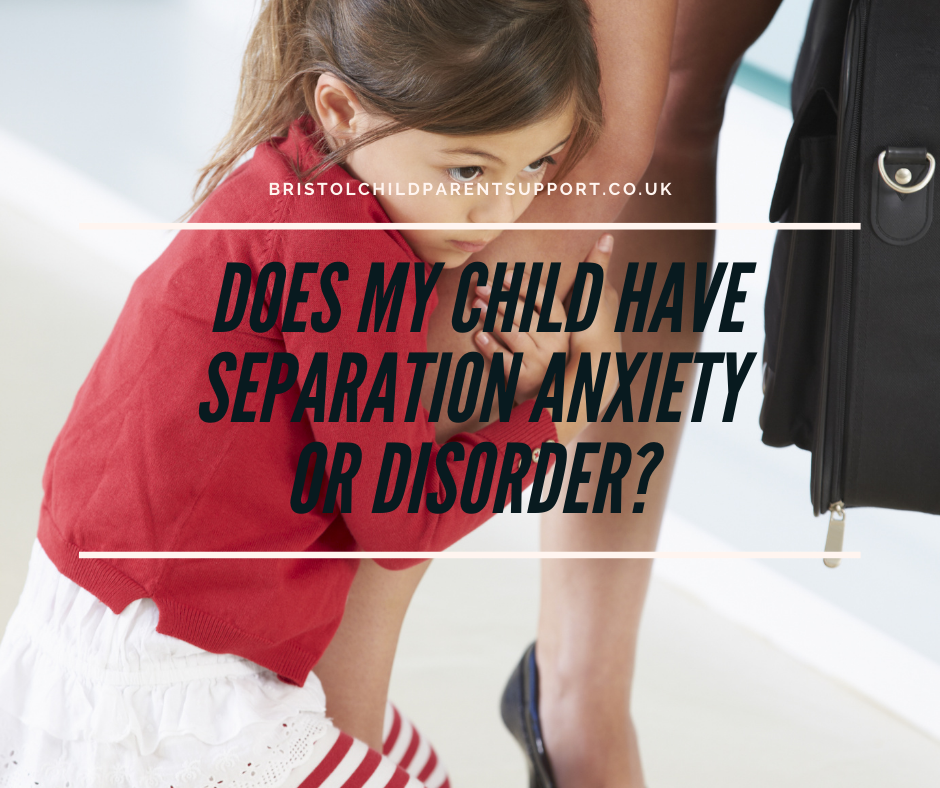Life is full of separations, from birth to nursery to starting school, leaving home and death. The addition of a pandemic may explain why so many parents are contacting me with this concern. To help you cope with the separations, here are some suggestions and ideas:
What is Separation Anxiety?
Separation anxiety is a natural developmental stage. The baby may weep if its mother is out of view for a short while, while the young child may hold onto you or throw a tantrum when they are about to start school for the first time. Since children depend on their carers, it’s natural for them to feel vulnerable when you leave them. Although the degree and duration of separation anxiety may differ greatly among children, it is crucial to keep in mind that feeling a little anxious about being away from parents is normal, even as a child grows older.
When does it become a Disorder?
However, some children experience separation anxiety that doesn’t go away, even with a parent’s best efforts. These children experience a continuation or recurrence of intense separation anxiety during their junior school years or beyond. They often complain of tummy aches, headaches, or other physical symptoms. The distress prevents them from participating in age-appropriate activities and learning opportunities like joining sports teams or, in some cases attending school. The anxiety often means that they need their parents to be constantly present. Therefore, this is often time-consuming and tiring for parents.
Suppose separation anxiety is excessive enough to interfere with everyday activities like school and friendships and is persistent for months. In that case, it may signify a more significant problem: separation anxiety disorder. You can check out the Diagnostic Criteria for Separation Anxiety Disorder DSM-V.
Symptoms of an Anxiety Disorder
Fear that something terrible will happen to a loved one. The most common fear a child with separation anxiety disorder experiences is the worry that harm will come to a loved one in the child’s absence. For example, the child may constantly worry about a parent getting sick or hurt.
Worry that an unpredicted event will lead to permanent separation. Your child may fear that something will happen to maintain the separation once separated from you. For example, they may worry about being kidnapped or getting lost.
Refusal to go to school. A child with a separation anxiety disorder may have an unreasonable fear of school and will do almost anything to stay home.
Reluctance to go to sleep. Separation anxiety disorder sometimes creates Sleep onset difficulties, either because of the fear of being alone or nightmares about separation.
Repeated complaints of physical symptoms (headaches, stomach aches, nausea, or vomiting).
Risk factors for developing the Disorder may include:
- Life stresses or losses that result in separation, such as the illness or death of a loved one, loss of a beloved pet, divorce of parents, or moving or going away to school.
- Certain temperaments and sensitive Amygdala are more prone to anxiety disorders than others.
- Family history, including blood relatives with anxiety or anxiety disorder, indicates that those traits could be inherited, intergenerational attachment and separation difficulties.
- Overprotective parenting
- Environmental issues, such as experiencing some disaster that involves separation. For Example, Pandemics!
What is the treatment for Separation Anxiety Disorder?
There are few studies on treating SAD; most research is for generalised anxiety. Most children suffer from Anxiety Disorder before the age of 12. Medication is rarely a treatment option in the UK. Cognitive behaviour therapy (CBT), including psychoeducation, relaxation, teaching coping self-talk, and exposure therapy, is the most common treatment for children with Separation Anxiety.
CBT works best with children with an excellent cognitive capacity to identify negative thoughts. For very young children and those not as able or motivated, art therapy with parent-child pairs has been found helpful in improving parent-child relationships and decreasing anxiety (Plante & Bernache, 2008), and sometimes parent-only interventions work.
I prefer an Integrative intervention that includes a parent and child intervention. This shape is more effective than individualised child CBT (Barrett, Dadds, and Rapee, 1996). Integrative models focus on parental thoughts, parenting behaviours, and parent-child attachment. This often includes parental fears of SAD, parental fears of leaving the child, and negative parental cognitions.
How to ease normal Separation Anxiety
Practise separation at home. First; small steps help. Leave your child with a caregiver for brief periods and short distances first. You are even helping them move from downstairs to upstairs on their own can help. Games like hide-and-seek and peek-a-boo can help the process as your child gets used to separation. You can gradually leave for longer and travel further.
Schedule separations after naps or feedings. Babies are more susceptible to separation anxiety when they’re tired or hungry.
Develop a quick “goodbye” ritual at night or other transitions, such as just before school.
Rituals are reassuring and can be as simple as a particular wave or a goodbye kiss through the window.
Identify a safe attachment figure for the handover. It is not helpful if you are anxious to have multiple attachment figures. You can use a simple three-step process: hug goodbye and hand them over to a teacher or someone your child has an attachment with.
Use a transitional object—something of yours to keep if they are worried about being away from you.
I know it might be strange to leave mummy or not be at home but I know you are going to be fine once you are there. Let’s think of something you can bring in to help you feel safe. What can I do to help you?
For children whose parents have gone through a divorce or experienced the loss of a loved one, provide them with a worry stone, a personal item to hold onto, a bracelet, or a cherished toy to serve as a “transitional object”.

Name the Worry– even younger children need their feelings named and acknowledged.

If you know a significant separation is coming, listen, plan, and problem-solve with your child. Make a picture book of positive separations in readiness. Talk about previous transitions and think about what worked and what you may do differently this time.
You can use the Ladder of Success to help work together on goals

Try not to give in. Be positive; setting consistent expectations and limits will help your child’s adjustment to separation.
Even though it is often from a loving place, it maintains the cycle if we give to anxiety.
In Conclusion
Whether your child is fretful when parted from you, separation anxiety/disorder is treatable. You can do plenty of things to make your child feel safer and ease separation anxiety.
Remember: parenting is hard work, and you all deserve support. And when it all starts to feel impossible, ask for help. If you need help and support, contact me for a consultation or join my newsletter community. With Gratitude Catherine
If you enjoyed this blog post and found it helpful or inspiring, please share it with your friends on social media by clicking on the icons on the side. Thank you for visiting my website!
Other Related Posts:
Recognising Anxiety in your Child
Does my Child have GAD ( Generalised Anxiety Disorder)
Sleep and Anxiety, 9 Ways to Manage the Worry Monsters at Night
Back to School Anxiety following COVID-19
Back to School Sleep Solutions following the pandemic
Talking to your Child about Anxiety
Understanding and Managing Meltdowns
References:
- Dr Alexandra Boyd, Exeter University, IAPT Training Separation Anxiety
2. Liesbeth G. E. Telman,1 Francisca J. A. van Steensel,1 Marija Maric, two and Susan M. Bögels1,3 What are the odds of anxiety disorders running in families? A family study of anxiety disorders in mothers, fathers, and siblings of children with anxiety disorders, Pubmed ncbi.nlm.nih.gov/pmc/articles/PMC5945734
3. American Psychiatric Association DSM -5



